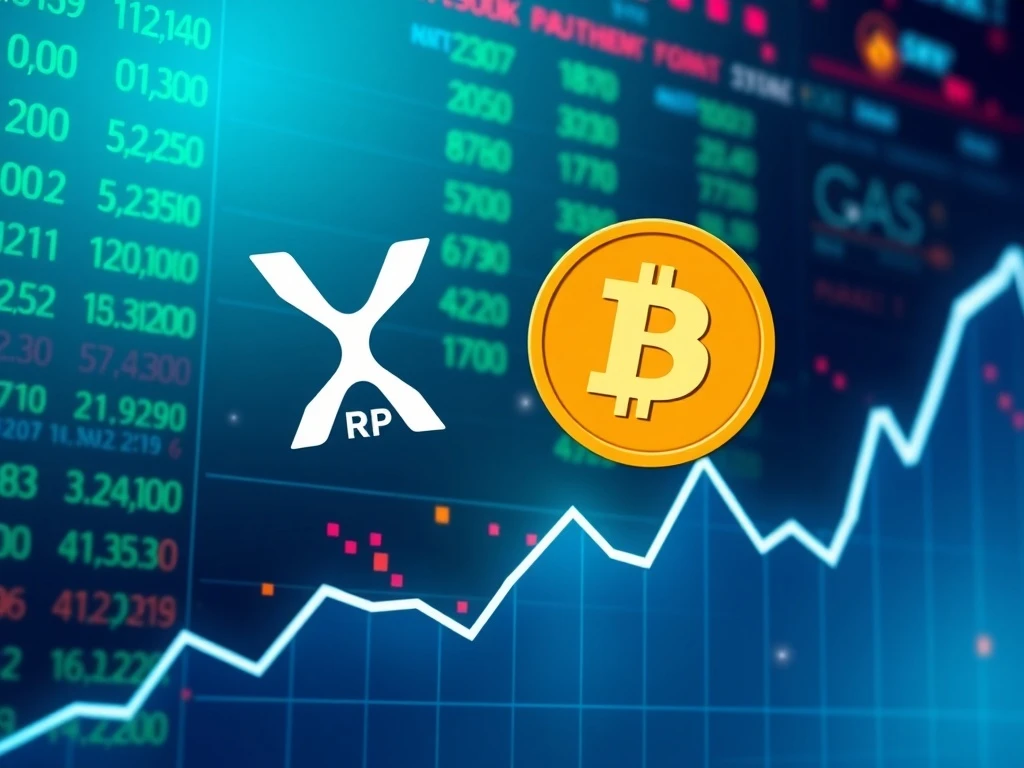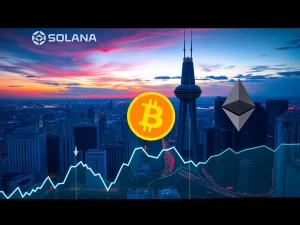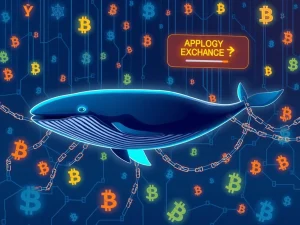XRP ETF: Historic Launch Ignites New Era for Altcoin Investment

The cryptocurrency world is buzzing with anticipation. This week, two groundbreaking exchange-traded funds (ETFs) tracking XRP and Dogecoin are set to launch in the United States. This development marks a pivotal moment for altcoins, offering investors new avenues for exposure to digital assets. The approvals signal a growing acceptance of crypto investment products by regulators, moving beyond just Bitcoin.
The Landmark Arrival of the XRP ETF
Investors keenly await the debut of the REX-Osprey XRP ETF. Trading under the ticker XRPR, this product represents a significant first. It will be the first U.S. ETF to offer investors direct spot exposure to XRP, currently the third-largest cryptocurrency by market capitalization. REX and Osprey successfully navigated the Securities and Exchange Commission’s (SEC) 75-day review period. Trading is expected to commence on Friday, barring any unforeseen delays.
Crucially, this XRP ETF launches under the Investment Company Act of 1940. This framework offers a simpler approval process compared to the Securities Act of 1933, which governed spot Bitcoin ETFs. Under the 1940 Act, a fund can automatically launch after 75 days unless the SEC raises an objection. This structural difference allowed for a more streamlined path to market. Nate Geraci, President of Nova Dius, noted this launch will be “another good litmus test for ’33 Act spot XRP ETF demand.” He also highlighted that futures-based XRP ETFs already hold nearly $1 billion in assets, indicating robust market interest.
Dogecoin ETF: Pioneering Memecoin Investment
The XRP fund is not the only altcoin ETF making headlines this week. The REX-Osprey Dogecoin (DOGE) ETF is also slated for launch. Bloomberg’s ETF expert, Eric Balchunas, confirmed the Doge ETF, ticker DOJE, is expected to launch on Thursday. Like its XRP counterpart, this product also secured approval under the 1940 Act. This makes it the first memecoin ETF in the United States, breaking new ground for a unique category of digital assets.
The introduction of a Dogecoin ETF signifies a remarkable shift. It extends traditional financial instruments to a cryptocurrency that began as an internet meme. This move could bring increased legitimacy and broader investor access to Dogecoin. It provides a regulated way for investors to gain exposure without directly holding the asset. This accessibility could potentially impact Dogecoin’s market dynamics and overall perception.
Understanding the 1940 Act Approval Advantage for Altcoin ETFs
The approval pathway through the Investment Company Act of 1940 proved instrumental for both the XRP and Dogecoin ETFs. This act, traditionally used for mutual funds and diversified ETFs, offers a distinct advantage. It allows funds to launch automatically after a 75-day filing period, provided the SEC does not object. This contrasts sharply with the Securities Act of 1933, which requires explicit SEC approval for products directly holding underlying assets, like spot Bitcoin ETFs.
Key advantages of the 1940 Act for these altcoin ETFs include:
- Automatic Launch: Funds can begin trading after the review period unless the SEC actively intervenes.
- Diversification Focus: The act typically governs diversified investment vehicles, which may be interpreted more favorably for baskets of assets or specific structures.
- Regulatory Clarity: For certain product types, the 1940 Act offers a more defined and less discretionary path.
This approach could pave the way for more altcoin ETFs in the future. It offers a clearer regulatory framework for fund issuers to navigate.
REX-Osprey: A Pioneer in Crypto ETFs
REX-Osprey stands at the forefront of introducing innovative crypto investment products. Their track record includes the launch of the first Solana staking ETF (SSK) in July. While interest in SSK has been somewhat modest, with $274 million in assets under management since launch, their continued efforts highlight a commitment to expanding crypto access. They also filed for a BNB (BNB) staking ETF in late August, demonstrating a strategic focus on a diverse range of altcoins.
The firm’s proactive approach in securing approvals for crypto ETFs underscores their role as a key player. They are actively shaping the landscape of digital asset investment. Their success with XRP and Dogecoin products could encourage other issuers to explore similar avenues. This further validates the demand for regulated exposure to various cryptocurrencies.
The Expanding Altcoin ETF Pipeline and Future Outlook
The launches this week are just the tip of the iceberg. The broader altcoin ETF landscape is rapidly expanding. According to Bloomberg ETF analyst James Seyffart, over 90 crypto exchange-traded products were awaiting SEC approval by the end of August. This substantial pipeline indicates a strong market appetite and a continuous push from issuers to bring more crypto products to traditional finance.
Recent developments further illustrate this trend:
- Litecoin ETF: Canary Capital updated its prospectus filing for a Litecoin ETF. The SEC’s final decision is due in the first week of October.
- Avalanche ETF: Bitwise filed a prospectus for a spot Avalanche (AVAX) ETF. VanEck and Grayscale also have active filings for an Avalanche ETF, showing competitive interest in this asset.
- SEC Delays: The SEC has delayed decisions on other proposed products, including Bitwise’s Dogecoin ETF and Grayscale’s Hedera ETF, setting new deadlines for November 12.
These ongoing filings and regulatory reviews underscore the dynamic nature of the crypto ETF market. They highlight the increasing mainstream interest in a wider array of digital assets beyond just Bitcoin and Ethereum. The regulatory environment remains cautious but is clearly evolving to accommodate these new financial instruments.
Market Implications and Investor Sentiment for New Crypto ETFs
The launch of the XRP ETF and Dogecoin ETF carries significant market implications. These products offer a regulated and accessible entry point for a broader range of investors. Many traditional investors might hesitate to directly purchase and custody cryptocurrencies. ETFs remove these barriers. This increased accessibility could lead to higher liquidity and potentially greater price stability for these altcoins. It also signals a growing institutional embrace of digital assets, enhancing their legitimacy.
Furthermore, the availability of these products could positively influence investor sentiment. It suggests that regulators are becoming more comfortable with altcoins. This comfort might encourage further investment and innovation within the crypto space. However, investors should remember that all investments carry risk. The performance of these ETFs will depend on the underlying asset’s market movements. These movements can be volatile.
Challenges and Regulatory Scrutiny Ahead
While the recent approvals are a positive step, the path for crypto ETFs remains complex. The SEC continues its cautious approach, focusing on investor protection and market integrity. Concerns about market manipulation and adequate surveillance persist. The evolving regulatory framework requires issuers to adapt constantly. Future approvals for other altcoin ETFs will likely depend on several factors:
- Market Maturity: The perceived stability and liquidity of the underlying cryptocurrency.
- Surveillance Sharing Agreements: The ability of exchanges to share data to prevent fraud and manipulation.
- Regulatory Clarity: Further guidance or legislation from government bodies regarding digital assets.
These challenges mean that while the door is opening, it is not yet fully open for every altcoin. Each new filing will face scrutiny. Issuers must demonstrate compliance and robust safeguards.
The Future Horizon for Crypto Investment Products
The launch of the XRP ETF and the Dogecoin ETF represents a significant milestone. It pushes the boundaries of traditional finance into the digital asset realm. This development opens up new possibilities for investment products beyond just spot exposure. Staking ETFs, for example, offer investors potential yield from their crypto holdings. As the market matures, we can expect to see more sophisticated and diverse crypto ETFs emerge.
The long-term outlook for crypto as an asset class looks increasingly integrated into mainstream finance. These ETFs provide a bridge. They connect the innovative world of cryptocurrencies with the established structure of capital markets. This integration could lead to greater stability, wider adoption, and continued innovation in the digital economy. Investors now have more choices than ever to participate in the burgeoning altcoin market through regulated financial products.








